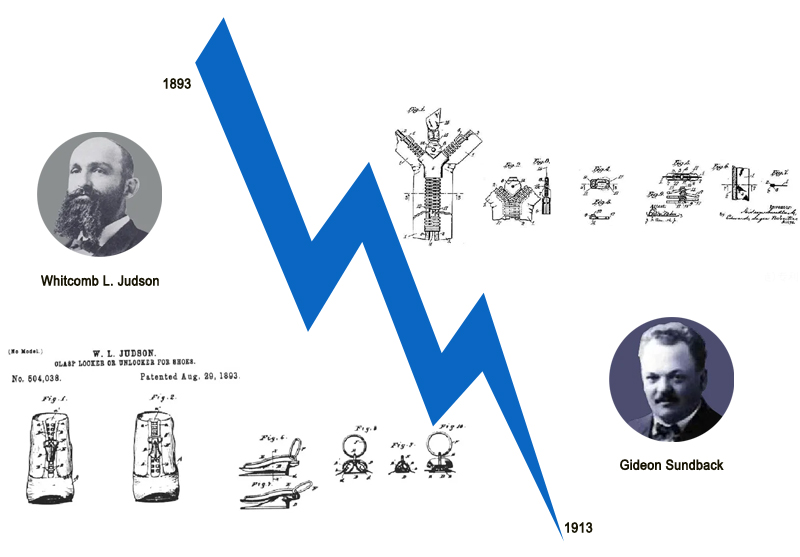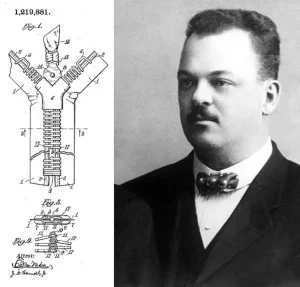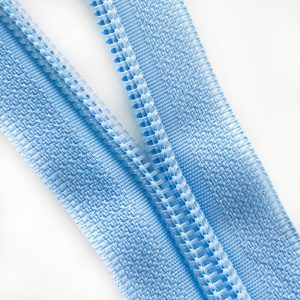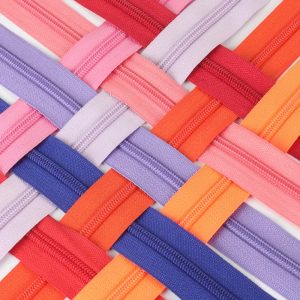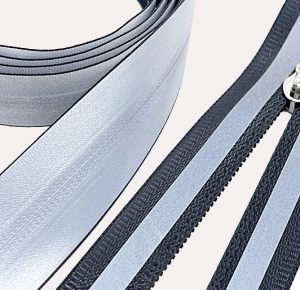Zipper, a seemingly mundane object, has a rich and fascinating history that mirrors the evolution of modern society. From its humble beginnings as a cumbersome fastening mechanism to its current status as an indispensable component of our daily lives, the journey of the zipper is a testament to human ingenuity and the relentless pursuit of improvement.
Early Beginnings and Challenges
The concept of continuous fasteners existed long before the invention of the modern zipper. Although credited with pioneering the idea of constant fasteners, Elias Howe’s design, reliant on intricate hooks and eyes, ultimately proved impractical due to its tendency to snag. As a result, the zipper remained more of a novelty than a practical item. Howe’s initial attempt was termed an Automatic, Continuous Clothing Closure, but it was neither automatic nor particularly continuous, marking it the important yet imperfect first step toward modern fastening technology.
Gideon Sundback: The Father of the Modern Zipper
It was the Swedish-American engineer Gideon Sundback, who truly revolutionized the zipper. In the early 20th century, he introduced a design that would become the foundation for the modern zipper. Sundback’s innovation lay in the interlocking teeth, a slider, and a track, creating that was significantly more reliable and efficient than its predecessors. In 1917, Sundback secured a patent for his Separable Fastener design. While struggling to gain commercial traction, his invention would become a staple in the fashion and consumer goods industries. The military was instrumental in popularizing the zipper, widely adopting it for uniforms and equipment in World War I, demonstrating its practicality and durability.
Material Evolution: From Metal to Plastic
The materials used in zipper production have evolved significantly over the years:
- Metal Zippers: Early zippers were primarily made of metal, offering durability but adding significant weight. These metal zippers were robust and reliable but limited by their heaviness and potential for rusting.
- Plastic Zippers: The advent of plastics led to lighter and more flexible zipper options, making them suitable for many applications. The development of plastic zippers in the 1940s marked a significant shift, providing a rust-free alternative that was lighter and more versatile.
- Nylon Zippers: Nylon zippers, introduced in the mid-20th century, offered excellent resistance to corrosion and abrasion, making them ideal for outdoor gear and other demanding applications. The flexibility and durability of nylon opened up new possibilities for zipper usage in different environments.
Design Diversity: Adapting to Different Needs
The design of zippers has diversified to cater to various needs:
- Invisible Zippers: These are concealed within a seam, providing a clean and discreet finish, used in formal wear. This type is especially favored in the fashion industry because it blends well with the clothing.
- Colorful Zippers: Available in a wide range of colors, these add personality and flair to outfits. Designers often use colored zippers to make a statement or to add a playful element to their creations.
- Specialty Zippers: There are countless specialty zippers, such as waterproof zippers, self-healing zippers, and decorative zippers, designed for specific purposes. These innovations have enabled zippers to use different specialized applications, from high-performance sportswear to rugged outdoor gear.
Expanding Applications
Zippers have found their way into numerous applications, enhancing functionality and convenience across various domains:
- Apparel: Zippers are ubiquitous in clothing, from jackets and pants to dresses and shoes. They provide a secure yet easily adjustable fastening method, making them a favorite in the fashion industry.
- Bags and Luggage: Zippers can provide convenient access to the contents of bags and suitcases, ensuring security and ease of use. The durability and reliability of zippers make them the preferred choice for securing personal belongings in travel gear.
- Outdoor Gear: Zippers are essential for outdoor gear like tents, sleeping bags, and backpacks, where durability and reliability are crucial. In these applications, zippers must withstand harsh conditions and frequent use.
- Industrial Applications: Zippers find diverse applications across industries, from apparel and footwear to automotive and aerospace sectors. They find applications in everything from protective suits and gear to specialized machinery covers and enclosures.
The Future of Zippers
As technology advances, the future of zippers holds exciting possibilities:
- Intelligent Zippers: The combination of sensors and actuators in zipper technology could lead to features such as automated opening and closing, enhancing convenience and functionality. These could revolutionize industries like healthcare and fashion, providing modern clothing that adapts to the needs.
- Sustainable Zippers: By developing biodegradable and recycled materials, the zipper industry can contribute to a greener future, aligning with growing sustainability concerns. This shift is critical as industries seek to reduce their environmental footprint and promote eco-friendly products.
Conclusion
The journey from a simple fastening device to a versatile and essential component of modern life is a testament to human innovation. The pursuit of convenience, durability, and style has propelled its evolution, making it an indispensable part of our daily lives. As we look to the future, the zipper will continue to adapt and evolve, meeting new challenges and demands with the same spirit of ingenuity that has characterized its history. The story of the zipper is not just about a piece of hardware; continuous improvement and adaptation, reflecting the dynamic nature of human progress and technological advancement.

